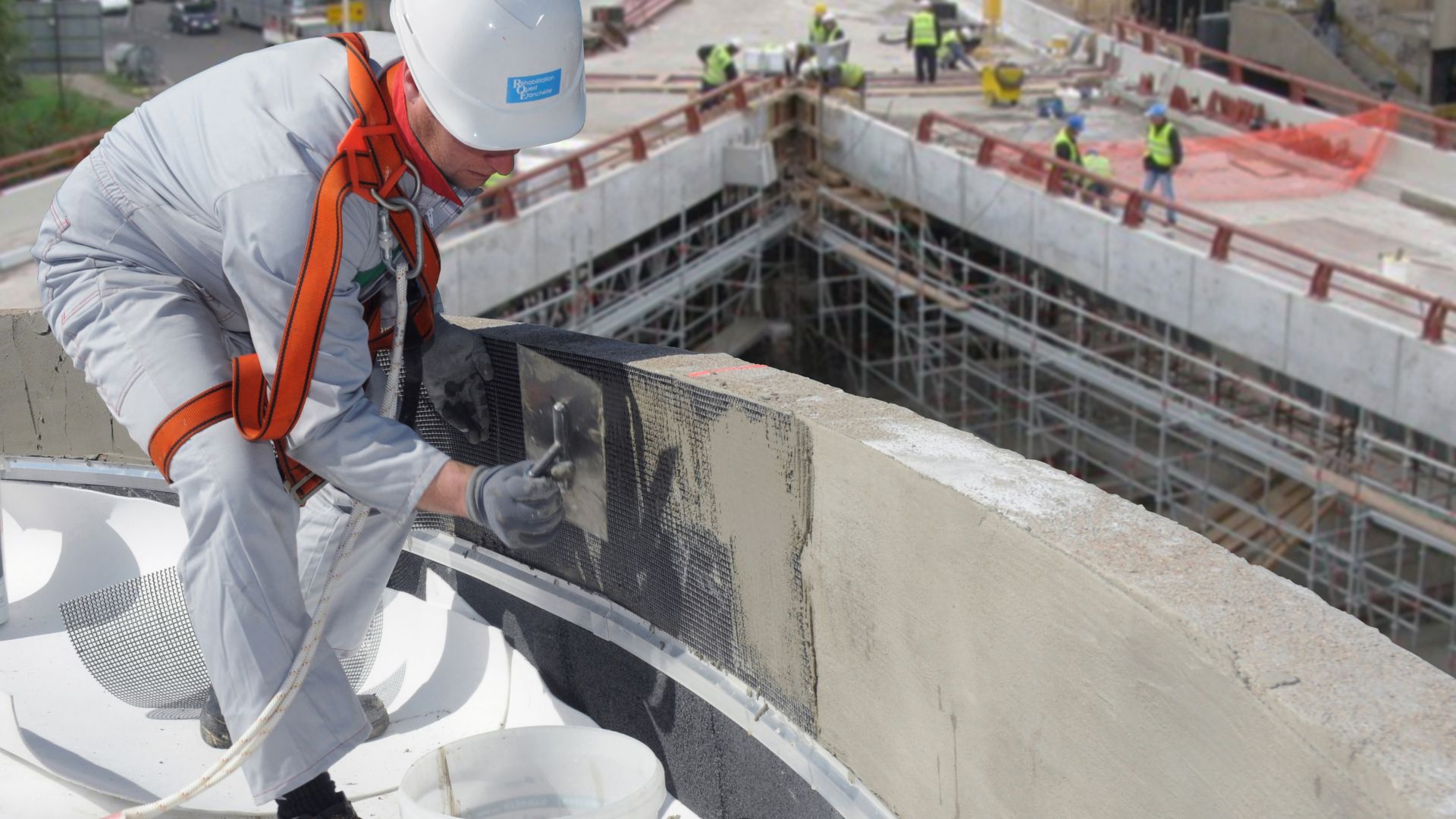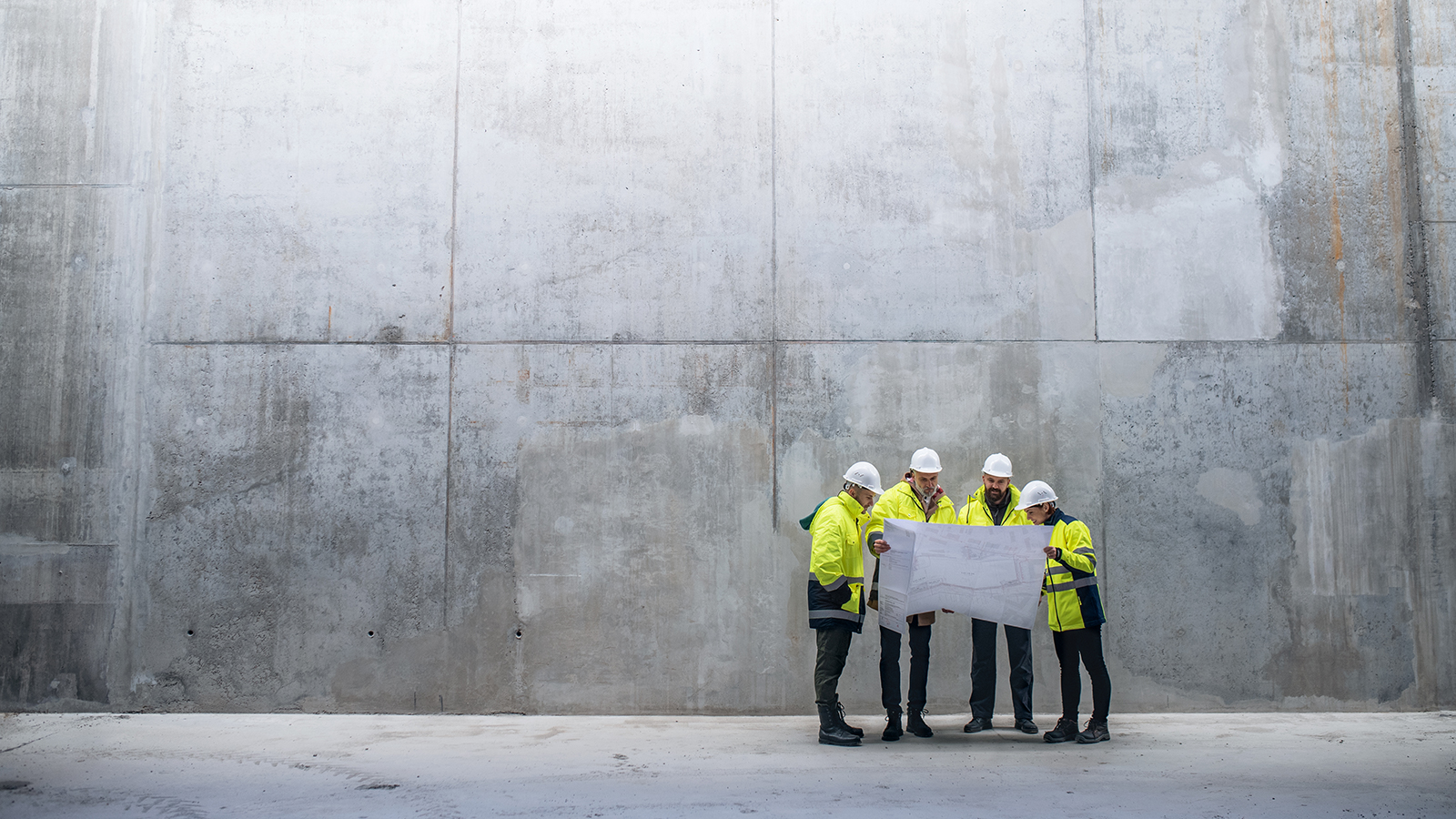The Necessary Duty of Concrete Structure in Structural Stability and Long Life
When it pertains to building a property, the structure is much more vital than you may believe. Concrete structures supply unparalleled strength and resilience, guaranteeing your framework can withstand different environmental difficulties. Without a strong base, you risk prospective concerns like shifting or breaking, which can endanger safety and worth. Recognizing the subtleties of concrete foundations could be the trick to preserving your investment for years to come. What should you think about next?
Comprehending the Importance of Concrete Foundations
Concrete foundations are important to the general stability of any type of structure, as they provide the crucial support needed to hold up against numerous loads and ecological conditions. When you consider building a home or a commercial space, the structure is the very first thing you need to take into consideration. It serves as a barrier versus dampness, safeguarding your residential property from water damage. A well-placed concrete foundation also stops settling and moving, which can result in splits in wall surfaces and floorings. You'll wish to guarantee that the foundation is correctly created and enhanced, as this impacts the durability of your building. In addition, a strong structure can improve energy effectiveness by decreasing air leakages. Remember, neglecting the significance of a concrete foundation can cause costly fixings down the line. So, spending in a quality foundation upfront is vital for the stability and durability of your framework.
Benefits of Concrete Structures for Structural Integrity
While several factors add to a building's architectural honesty, concrete structures supply unrivaled toughness and stamina. You'll appreciate that concrete can stand up to extreme climate condition, withstanding both dampness and temperature level changes. This durability suggests your structure is much less likely to experience splitting or moving in time, which can jeopardize its safety.Additionally, concrete's intrinsic weight gives a solid base, avoiding movement throughout natural events like earthquakes or floods. When you select a concrete structure, you're additionally selecting reduced upkeep; unlike timber, it will not rot or bring in insects, saving you time and money in repairs.Moreover, concrete's fire resistance provides included security, ensuring your structure can sustain heats without considerable damages. On the whole, purchasing a concrete foundation means you're prioritizing the long-term security and stability of your structure, making it a sensible option for any kind of building and construction job.
Usual Kinds Of Concrete Foundations
When it pertains to building foundations, recognizing the typical types of concrete structures can assist you make educated selections for your job. The most common kinds include slab-on-grade, crawl space, and full basement foundations.A slab-on-grade structure is a basic, cost-effective alternative, where a thick concrete piece is put straight on the ground. This type works well in warm environments, as it minimizes warm loss.Crawl space structures boost the home slightly above ground, allowing for air flow and accessibility to pipes and electric systems. This style can help prevent wetness issues.Full cellar foundations provide additional living or storage room while giving excellent structural support. They call for even more excavation and are typically used in cooler environments to protect against frost heave.
Aspects to Take Into Consideration When Creating a Concrete Structure

Ideal Practices for Installing Concrete Foundations
When you're mounting a concrete structure, correct site prep work is vital to assure security (West Coast General Engineering concrete foundation Rancho Cucamonga). You'll also need to comprehend support strategies to boost stamina and toughness. Do not ignore the treating process, as it plays a fundamental role in attaining a strong foundation.
Site Preparation Significance
It may seem simple, proper website preparation is crucial for ensuring a strong and resilient concrete structure. Begin by clearing the area of any kind of debris, plant life, or organic material that might jeopardize the foundation's honesty. Next, examine the soil type and compaction; you might need to dig deep into or include materials to produce a steady base. Level the ground to assure also weight circulation and prevent resolving problems in the future. Installing appropriate drainage systems is additionally vital to stop water accumulation, which can compromise the structure gradually. Lastly, define the foundation's measurements precisely to lead the putting process. By complying with these steps, you'll set the stage for a successful concrete structure that stands the test of time.
Reinforcement Strategies Clarified
As soon as the site is appropriately prepared, the following action in guaranteeing a sturdy concrete foundation involves executing efficient reinforcement methods. You need to begin by utilizing steel rebar, which supplies tensile stamina and aids protect against cracking. Lay the rebar in a grid pattern, making certain it rises utilizing spacers to maintain correct protection. Additionally, take into consideration using wire mesh for added support, particularly in areas subject to hefty lots. Do not forget to tie the rebar intersections safely with cable. For bigger structures, fiber reinforcement can boost toughness, lowering the risk of shrinking fractures. Always comply with neighborhood building codes and guidelines to make sure compliance. By applying these support methods, you'll considerably boost your structure's strength and long life, laying a strong foundation for your framework.
Curing Process Essentials
To guarantee your concrete foundation treatments correctly, it is very important to maintain sufficient wetness and temperature conditions instantly after pouring. Beginning by covering the surface with a damp burlap or plastic bed linen to keep moisture. This maintains the concrete hydrated, protecting against splits and ensuring stamina. You should likewise keep track of the temperature level; suitable healing problems are between 50 ° F and 90 ° F. If it's as well warm, mist the surface area on a regular basis to avoid fast dissipation. For cool climate, consider making use of insulating blankets to keep heat. Goal for a treating period of at least 7 days, as this is crucial for ideal toughness development. By following these finest practices, you'll boost your structure's resilience and durability, guaranteeing read review architectural stability for several years to come.
Upkeep of Concrete Foundations for Longevity
To maintain your concrete steps design concrete foundation strong and long lasting, normal examinations are necessary. You should also guarantee efficient drain options remain in area to stop water damages. If you spot any fractures, addressing them immediately will conserve you from bigger problems down the line.

Routine Assessments and Evaluations
While regular evaluations and assessments may appear like a duty, they're necessary for maintaining the integrity of your concrete structure. By consistently looking for cracks, shifts, or indications of wear, you can capture potential issues prior to they escalate into expensive repair services. Try to find any water merging around the structure or uncommon settling, as these can signal underlying problems. It's additionally important to check any type of adjustments in your home's framework, like doors that stick or windows that do not open smoothly. Keeping a document of your evaluations aids track modifications in time, permitting aggressive upkeep. Ultimately, these assessments guarantee your foundation remains steady, supporting the durability and safety and security of your entire framework. Do not neglect this important aspect of homeownership!
Reliable Water Drainage Solutions
Routine evaluations can reveal issues like drainage troubles that could compromise your concrete foundation's stability. To stop water accumulation, assure your seamless gutters and downspouts direct water far from the structure. Installing French drains can effectively redirect surface area and groundwater, lowering stress on your structure walls. In addition, grading the dirt around concrete stamps copyright your home aids assure that water moves away, instead of merging near your foundation.Consider making use of sump pumps in locations prone to flooding, as they proactively remove excess water. Regularly examine for clogs in drain systems and clear them promptly. You'll safeguard your foundation's honesty and long life by taking these positive measures. Bear in mind, efficient drainage solutions are crucial for preserving a strong, long lasting concrete foundation.
Prompt Fracture Repair Works
When you notice cracks in your concrete structure, addressing them without delay is crucial for maintaining its longevity. Tiny fractures can rapidly develop into larger concerns, jeopardizing the architectural honesty of your home. Consistently inspect your structure for indicators of damage, such as horizontal or upright fractures. If you identify any type of, do not wait-- fix them promptly. You can utilize epoxy injections or concrete patching substances, which work for securing splits. Constantly comply with the manufacturer's directions and think about speaking with a professional for substantial damages. Remember, timely repairs not just boost your foundation's longevity but also conserve you money in the lengthy run by stopping more comprehensive repair work down the line. Keep aggressive, and your structure will remain strong and protected.
Attending To Common Issues With Concrete Structures
Concrete foundations can face various problems in time, making it crucial to recognize and address them without delay. One of the most typical problems is cracking, which can occur because of temperature fluctuations or resolving soil. If you observe splits, it's vital to examine their size and depth; tiny fractures can typically be secured, while larger ones may require expert evaluation.Water invasion is an additional major problem. Excess dampness can lead to mold and mildew development and structural deterioration. Guarantee correct drain around your foundation to minimize this risk. Additionally, try to find signs of shifting or bowing wall surfaces, as this can indicate underlying problems with your structure's stability.Regular examinations are essential to catch these troubles early. If you spot any concerning indications, don't be reluctant to consult a structure expert. By staying positive, you can preserve the integrity and longevity of your concrete structure, assuring your home remains secure and safe.
Often Asked Concerns
How Does Soil Kind Affect Concrete Foundation Performance?
Dirt kind considerably affects concrete foundation efficiency. If you have actually got large clay, for instance, it can cause shifting and fracturing. Sandy dirt may bring about clearing up. Recognizing your dirt assists guarantee a stable foundation.
Can Concrete Foundations Be Fixed if Damaged?
Yes, you can repair damaged concrete structures. Relying on the level of the damage, methods like epoxy injection or slab jacking can restore stability. It's best to consult an expert for reliable options.
What Is the Regular Lifespan of a Concrete Structure?
A concrete structure normally lasts 30 to 100 years, relying on factors like soil conditions, environment, and upkeep. You'll intend to watch on it to ensure it continues to be in good form throughout its life expectancy.
Are There Alternative Materials to Concrete for Foundations?
Yes, there are choices to concrete for foundations, like steel, lumber, or perhaps recycled products. Each alternative has unique advantages and drawbacks, so you should consider your task's certain demands when choosing the appropriate material.
Exactly How Does Climate Influence Concrete Structure Sturdiness?
Environment considerably impacts concrete structure sturdiness (WCGE commercial concrete). Severe temperatures, moisture, and freeze-thaw cycles can compromise the material, resulting in splits and structural issues. You should take into consideration regional climate problems when preparing your foundation to guarantee long-lasting performance